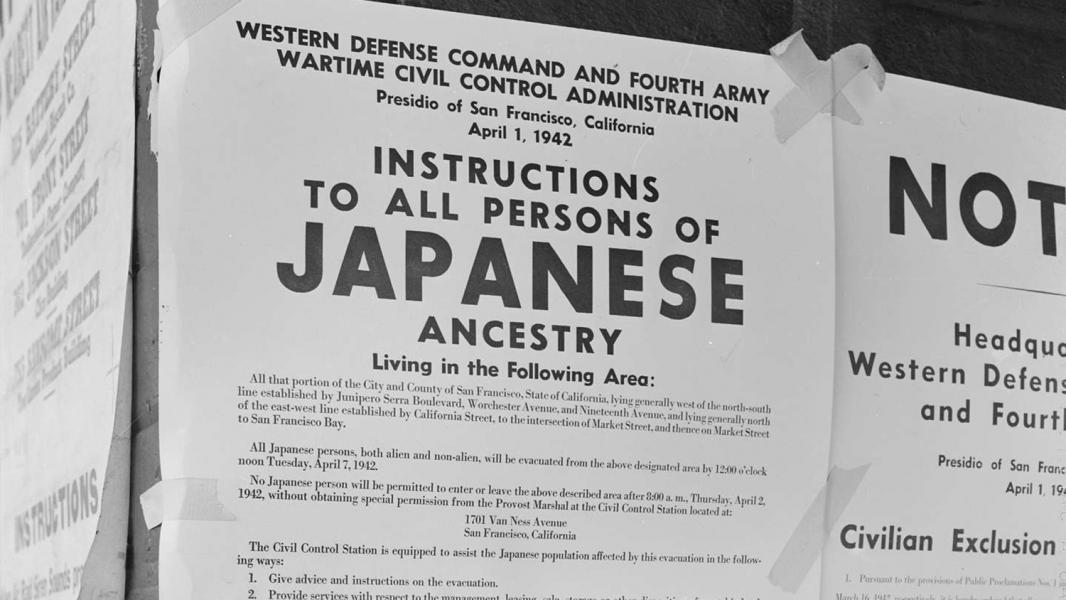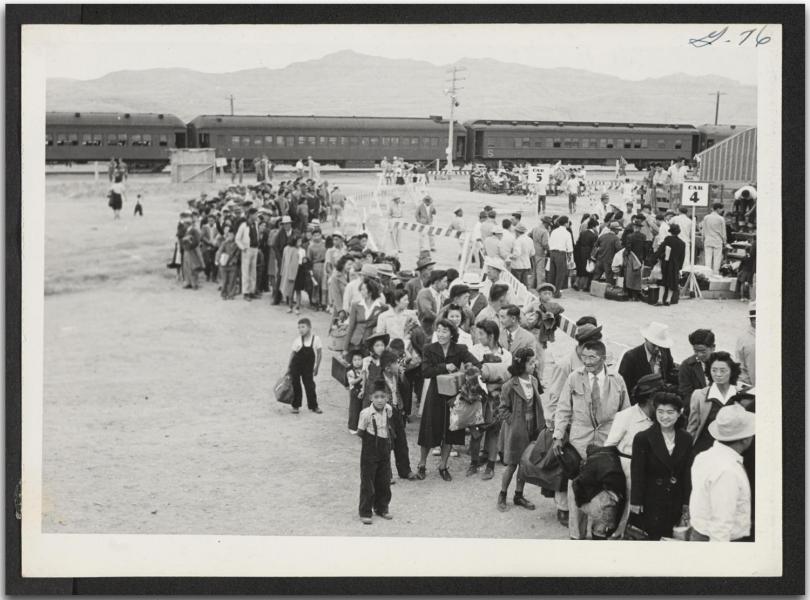
Top photo information: Manzanar Relocation Center, Manzanar, California, July 1, 1942. An elementary school with voluntary evacuee attendance and volunteer evacuee teachers, most of whom were college graduates. Photo credit: Dorothea Lange – U.S. National Archives and Records Administration, public domain.
Like so many others, my great-grandparents arrived in America in search of a better life. They worked hard to provide for their four children. They paid taxes, followed the law, and were contributing members of society. Their children — my grandfather and his siblings — were American citizens, and life as Seattleites was all they knew.
On February 19, 1942, my grandparents were teenage students attending Broadway High School (today’s Seattle Central College). That day, their lives would turn inside out, with President Franklin D. Roosevelt signing Executive Order 9066. By the stroke of his pen, they lost their freedom, alongside some 125,000 people of Japanese ancestry, most of whom were also children. Their family’s bank accounts were frozen, and their assets were seized. They were forcibly removed from their home and faced indefinite detention in government camps. For years, they lived behind barbed wire fences in muddied horse barracks and barren desserts. Each morning, they pledged allegiance to the flag of the United States of America — a country they loved, with ideals they kept — with liberty and justice for all.

When the war ended and they were released from camp, my family returned to Seattle and began the long process of rebuilding life from absolutely nothing. Due to exclusionary laws, one of the only places in the city they were allowed to live was in Central and South Seattle. In their hearts grew the undeterred commitment to striving for a better future. To this day, I live in the Hasegawa family home on Beacon Hill, where I now raise a family of my own.

On this Day of Remembrance marking 80 years since the signing of EO 9066, I am reflecting upon the trials, sacrifices, and successes of the people who came before me. As the first Asian American woman elected to the Port of Seattle Commission, I am cognizant of the ongoing nature of our work to be a fair, welcoming, and tolerant country and employer. In this way, I consider it my responsibility to pay forward deeds, in order to secure a better future for posterity.
Subscribe to receive email updates from Commissioner Hasegawa
In the spirit of promoting fairness, I am pleased to share the following highlights related to equity, diversity, and inclusion at the Port. Click the links below to read more.





